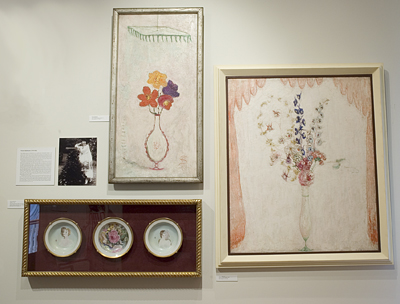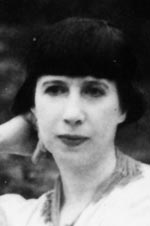|
|
|
|
|
|
|
|
|
|
|
|
|
|
|
|
|
|
|
|
|
|
|
|
|
|
![[Francis Naumann]](../4logo.gif) |
|
|
|
|
|
|
|
|
|
|
|
|
|
|
|
 |
|
|
|
 |
|
|
|
|
 |
|
|
|
|
|
|
|
|
|
|
 |
|
|
|
|
|
|
|
|
|
|
|
|
|
|
|
|
|
|
|
|
|
 |
|
|
|
|
|
|
|
|
|
|
|
|
|
|
|
|
|
 |
|
|
|
|
|
|
|
|
|
|
|
(1874-1955) Florine Stettheimer was born in Rochester, New York, to a wealthy family of German-Jewish immigrants. In the 1890s, their father abandoned the entire family, whereupon Florine—along with her sisters Carrie and Ettie—moved with their mother to Europe. Florine, who had first studied painting under Kenyon Cox and Robert Henri at the Art Students League in New York, continued to pursue her career as a painter, and renting a studio in Munich from 1910 to 1913. When war broke out in 1914, the family was forced to return to the United States, where the three sisters and their mother established residence in the townhouse of an aunt at 102 West 76th Street in Manhattan. There, for nearly thirty years, they served as hosts to a dynamic and entertaining literary and artistic salon, elaborate dinners that were attended by some of New York’s most prominent artists, writers and critics.
|
|
|
|
|
|
|
|
|
|
|
 |
|
|
|
|
|
|
|
|
|
|
|
|
|
|
Untitled, ca. 1914
Three hand-painted china plates, central plate 8 in. diameter; flanking, plates each 7 5/8 in. diameter
Each signed with the monograph: FSt |
|
|
|
|
|
|
|
|
|
|
|
Upon her return to the United States, Florine resumed her activities as a painter, infusing her pictures with American themes, for she found the spirit and vitality of the county inspiring. In the fall of 1916, she had her first one-person show at the Knoedler Gallery, but the reviews were mostly negative, and nothing sold. One critic said she was “independent without being entirely personal,” a cryptic remark, but one that might have been taken seruously by the artist. From that point onward, she painted in a new and fiercely independent style, one characterized by an even more emphatically personal subject matter. Whereas her earlier works displayed an unmistakable debt to Symbolist painting, she now dismissed all foreign influences, painting environments that were an extension of her life—mythic, ethereal spaces that were invariably populated by individuals she knew and cared for: her mother, her sisters, and her close circle of friends. In these pictures, the figures are often rendered as slight, ghostly apparitions, occupying a spatially ambiguous ground (paintings that Marcel Duchamp later termed “group pictures,” but which Florine called her “sentimental histories”). She also specialized in painting flowers and flower arrangements, canvases with impasto surfaces that are so heavily built up with pigment that the decorative image takes on a physical presence of its own, forcing viewers to perceive the painting as an object in its own right, rather than—as in traditional painting—the illusion of an object. |
|
|
|
|
|
|
The Stettheimers first met Duchamp in the fall of 1916, when he was hired to give them French lessons, which none of the three women actually needed (since they had spent quite a bit of time in France during their years abroad). Florine made Duchamp the subject of several paintings, and even through he returned to France in 1923, his friendship with the three sisters continued unabated, periodically renewed through correspondence or occasional visits to the United States. When Florine died in 1944, Duchamp helped her sister Ettie distribute her paintings to various museums throughout the country and, with the art critic Henry McBride, organized a retrospective exhibition of her work for the Museum of Modern Art in 1946. |
|
|
|
|
|
|
|
|
|
|
|
|
|
|
|
|
|
|
|
|
|
|
|
|
|
 |
 |
 |
 |
 |
 |
 |
 |
 |
 |
 |
 |
 |
 |
 |
 |
 |
 |
 |
 |
 |
 |
 |
![[Francis Naumann]](../4logo.gif)


